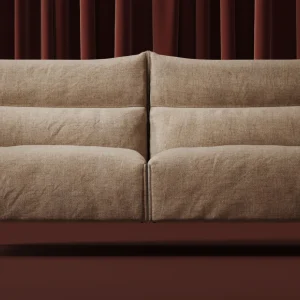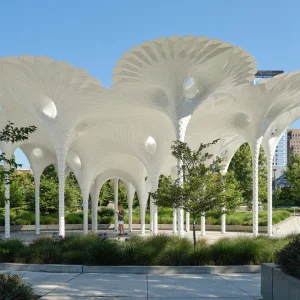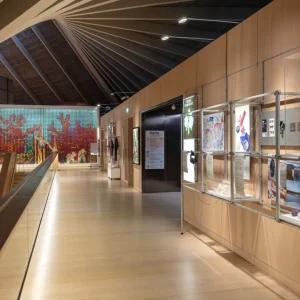The opening date also marks the 70th anniversary of the Warsaw Ghetto Uprising.
The new museum building is a concrete-and-glass structure, divided by a jagged chasm that symbolises Moses’ Biblical parting of the Red Sea that allowed the Jews to flee slavery in Egypt. The adjacent plaza that houses the ghetto uprising memorial was the starting point for the overall footprint of the concrete and steel structure, mirroring the proportions that led to a rectangular plan.
The facade is a combination of vertical silk-printed glass louvers with expanses of curtain walls allowing views and sunlight into the building, and copper panels over their consequent seams.
The interior hall of the museum featuring lightly textured concrete walls has an organic tunnel-like space to attract visitors. Designed as ‘pure and silent’, the space welcomes visitors to the museum and cuts through the orthogonal structure with its soft gradient shadows. The constantly transforming sinuous nature references to the old testament and at times abstractly references nature’s phenomena.
The roof of the museum is a reconstructed 17th-century wooden synagogue roof that will be a centerpiece. Based on a shul from the town of Gwozdziec, the roof’s hand-hewn timbers contain no nails. Scores of artists used natural pigments mixed with water and glue to paint the kaleidoscopic ceiling as it looked centuries ago, a veritable Jewish Sistine Chapel with wild reds and pale blues accenting the signs of the Zodiac, harmoniously sharing space with images of 67 animals along with passages from Torah.
The museum titled, ‘yum suf’ (sea of reeds) features the 1,000-year Jewish history, heritage, education, and culture through a series of multi-functional programmatic elements.
The primary exhibition room, located under the main hall, has 5,000 square meters of open space organised into different ambiances that aim to present the many facets of Polish-Jewish culture and history. The museum’s core exhibition will open to the public in 2014 as it is still under development.
The museum was funded by the Polish government, the city of Warsaw and several Jewish and non-Jewish donors. Approximately 500,000 visitors are expected to visit the museum annually.
Construction of the museum started in 2007.





